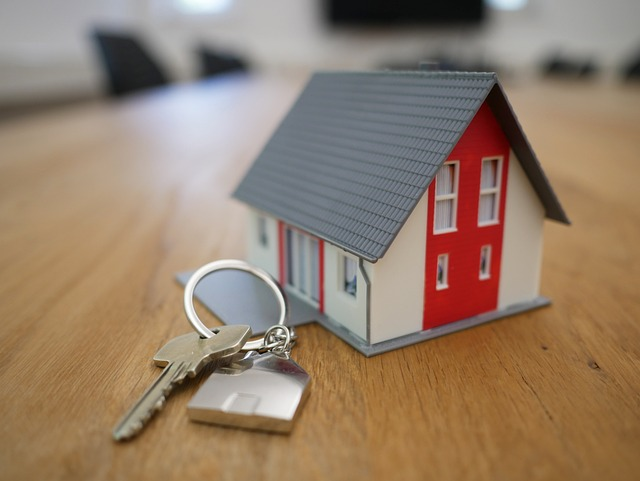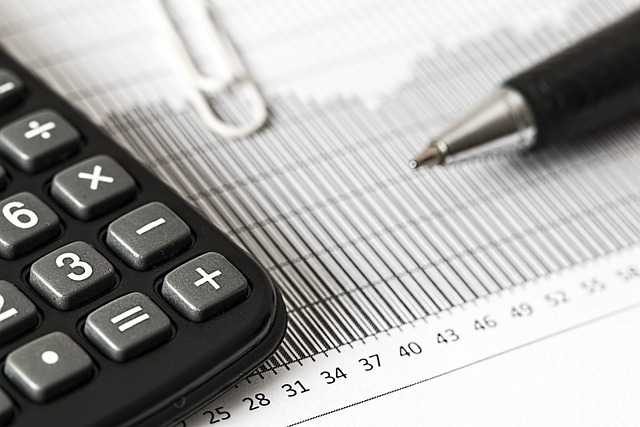HomeReady Program Qualifications for Borrowers
Fannie Mae Selling Guide for First-Time Homebuyer’s
What is a HomeReady loan?
Various loan programs offer help for homeowners who have low incomes or low down payments. This program is called a family home ready mortgage. It can cost as little as 35% in home loans. The amount is $6k for an average home of $200k. This would be lower than the 3.5% financing requirements of the government. Plus, you can get gift money or even loan money for the upfront cost. Co-borrowers living at home can apply for this. So HomeReady mortgages is one of the most affordable loans in existence in America. How do I purchase my dream property in my city with no mortgage and zero downpayment?

Review And Compare The Loan Benefits
Check all the terms and conditions in the loan before applying for the loan. Check out all the benefits offered with a Homeready Loan. This type of mortgage has higher rates due to low downpayment. Other loan types may be able to lower your interest costs if you have larger down payment money and payments. Find out all about it! Choosing a mortgage with a low-interest rate is the most beneficial step.
Benefits of HomeReady
Fidelity Mae launched the Home Ready program on Dec 15th, 2015. Currently, this is available from several large U.S. loan companies. A HomeReady loan enables homeowners who earn less than average in their region to get a more affordable mortgage at the current rate. This program even provides a 3% minimum down payment. Providing an additional income source for HomeReady borrowers provides an additional advantage. Applicants may apply to other coborrowers who live in their homes with them or are located somewhere else. It is called nonoccupant co-borrowers. You are entitled to also include the income earned by a landlord when you are using an application, provided you have good documentation.

HomeReady Loan Requirements
You need to be above your income limit to apply for HomeReady Loans, attend an online training course on homeownership education and have an excellent credit score. Some specific conditions could vary depending upon a lender, however the minimum requirement for a mortgage is specified in Home Ready Loans. Basic conditions for homeownership education registering for Home Ready are required for all eligible homeowners to enroll with the Homeowners Association. Please call Hope Helpline at 1-888-995HOPE or check their website. The Mortgage Report’s mortgage expert says that the loan is waived when you pay over 10% down. Apply Now.
Your home must be a residential property
HomeReady covers single-family houses and townhomes, condos, rowhouses and also includes single units with fewer than four floors. Home production is also possible as well. The property is forbidden.
Alternatives to the HomeReady Mortgage
HomeRawn is a low-interest mortgage loan. HomeReady’s low credit rating and flexible income rules favor first-timers in the housing market compared to most. a HomeReady mortgage loan application does not meet all needs. If a HomeReady mortgage loan is not ideal for you then you can get some low down payment mortgages – see all mortgages for first time homebuyers. As an investor you could also qualify for Federal tax credit as well as local down payment. Approval for applications.
HomeReady income limits 2023
HomeReady income limits will limit the earnings of home borrowers across the US. The minimum income required in the area is 80% of the county’s area median income earnings. If you are making $80,000 or less a year, you can receive HomeReadiness benefits. If your income exceeds the limit on Home Ready income, you must make payment loans not exceed the maximum AMI. Use the Fannie Mae HomeReady income limit tool to find your HomeReady income limit for 2023. Just enter the address in our online form for a detailed county median income. Salt Lake County in Utah also has a value in the amount of $122,000.

Eligible property types
A Borrower can purchase homes in several ways with an affordable HomeReady loan. You can purchase the typical singlefamily home you want to purchase. Fannie Mae offers the opportunity of buying: Any house bought with a HomeReady mortgage must be their primary residence. If there are two or four buildings, the owner will have to live in either. It is advisable not to use this loan to make investments in property or to buy vacation property. It is designed for people of all ages seeking habitation.
Does HomeReady allow non-occupant co-borrowers?
Yes, a HomeReady applicant can add people to the mortgage application who can help the lender financially with payment and mortgage insurance, but don’t reside on their own.
Fixed-rate mortgage options
Borrowers using HomeReady’s mortgage program are able to choose from many fixed-rate mortgage products. Shorter-term loans can typically be cheaper than a 30-year loan. Because the rates were low and short-term, borrowers saved thousands over their loan life span. However 10 to 15 years of a loan are usually much more costly than 30-year loan payments. You can repay at least one borrower of the loan amount in less time. Most people opt to purchase homes at 30-year Fixed Rates for these reasons.
HomeReady Mortgage Rates and Mortgage Insurance
HomeReadies is a free mortgage program offering affordable mortgage loans to poorer or more modest families. Applicants who have good credit can get mortgage rates less than 0.5% below the average conventional rate. Buyers with good credit scores are offered discounts up to 0.55% off the market average. Home Ready also offers discounts for private mortgages on qualifying buyers. A typical Home Ready Homeowner is paid lower for PMI and can save hundreds of thousands per year on homeowners’ mortgages.

HomeReady income source flexibility
Fannie Mae gives applicants the opportunity to apply with another co-eligible borrower whose combined income falls within the home-ready income threshold. If the renter has lived in your home more than a year before you bought the home then the rental income is counted median household income for that property. Fannie Mae has even allowed lenders to look at non-borrowing households for income, and this might increase your credit score based upon your DTI. Please note the rental income of non-borrowers is not automatically reflected as qualifying income. Moreover, the policies vary depending upon lenders and considerations of income outside of borrowing are rare.
HomeReady loans vs. FHA loans
Like Home Ready loans, FHA loans can assist in managing the financial challenges and difficulties associated with home ownership. HomeReady: You can get FHA credit. What are the best loans programs? Renters without enough cash are still using FHA loans in 1934 as of today. Currently the minimum payment for loans is 3.5% compared to 3.3% for a HomeReady loan. Both loans have similar monthly payments, with significant differences.
When is an FHA loan better than HomeReady?
Currently the FHA offers better loans for those with a low credit score. A minimum of 581 FICOs could give you an easy loan. Borrowers in the 50-570 range can get an offer, however they must pay 10%. Federal government funding helps lenders provide favorable loans for people who have poor credit history. HomeReady mortgages also relies on borrowers’ financial history to make a loan, but you’d need 620 to qualify. Also, for higher-income individuals, FHA lending can work best because unlike today’s HomeReady mortgage rates there is no earnings limit.
Is HomeReady for first-time home buyers only?
HomeReady products are suited for repeat homebuyers, and refinancing homes.
Who Is Eligible for the Fannie Mae HomeReady Mortgage?
Applicants are selected from a list. Buyers that meet these requirements are automatically granted entry into the program and a purchase price is assigned automatically. HomeReady’s application is not required. This is what it takes to get to.
What is the minimum credit score for HomeReady?
HomeReady requires 620 credit score for the program. HomeReady is using mortgage scoring software based on FICO scores. Read about credit scores when you enroll in housing counseling. You will be informed of what are the borrower’s credit score requirements. You will want to make sure you reach the minimum credit score.

HomeReady & Accessory Dwelling Units (ADU) and Boarder Income
Fannie Mae launched HomeReady as a mortgage on multigenerational homes in 2014. The legislation also allowed parents, grandparents and children to receive their boarder income earnings from each other. Several years later a program was extended allowing for accessory housing units. An accessory unit is a space that contains a kitchen or bathroom within the house and usually has an entryway. Adaptable units are usually located at the bottom of the floor or above the garage, or on a particular piece of land. ADUs are sometimes separated by a home’s location.
What’s the Difference between HomeReady and Home Possible?
HomeReady by Fannie Mac is an easy-to-use home loan application tool.
Can I use gift funds with a HomeReady mortgage?
Okay, home mortgages allow cash gifting for the initial deposit.

Can I use an adjustable-rate mortgage with HomeReady?
Yes. Homeowners have the option of getting a fixed interest mortgage loan through HomeReady.
Homeready Mortgage Application
The HomeReady mortgage application process is similar to other mortgage programs, but there are a few specific requirements that borrowers must meet. Here are the general steps involved in applying for a HomeReady mortgage:
Determine your eligibility: Before you apply for a HomeReady mortgage, you’ll need to make sure that you meet the program’s eligibility requirements. This includes having a credit score of at least 620, meeting income limits for your area, and completing a homeownership education course.
Find a lender: To apply for a HomeReady mortgage, you’ll need to work with a lender that is approved to offer Fannie Mae’s HomeReady program. You can search for approved lenders on Fannie Mae’s website.
Pre-approval: Before you start shopping for a home, it’s a good idea to get pre-approved for a HomeReady mortgage. This will give you an idea of how much you can afford to spend on a home and can help you narrow down your search.
Gather documentation: When you apply for a HomeReady mortgage, you’ll need to provide documentation to support your application. This may include proof of income, employment history, bank statements, and tax returns.
Submit your application: Once you’ve found a lender and gathered all of the necessary documentation, you can submit your HomeReady mortgage application. The lender will review your application and let you know if you’re approved for a mortgage.
Underwriting: After you’ve been pre-approved, your lender will conduct an underwriting review of your application. This includes verifying your income and employment history, reviewing your credit score and credit history, and ensuring that you meet all of the program’s eligibility requirements.
Closing: If your application is approved, you’ll need to attend a closing meeting to finalize your mortgage. At the closing, you’ll sign all of the necessary paperwork and pay any closing costs and fees associated with the mortgage.
Overall, the HomeReady mortgage application process is similar to other mortgage programs, but borrowers will need to meet specific eligibility requirements and complete a homeownership education course to qualify for the program. Working with an experienced lender who is familiar with the HomeReady program can help make the application process smoother and easier.
Do I need to make a 20% down payment with HomeReady?
No, HomeReady does NOT require a 20% deposit. Homebuyers can pay 3 percent down to get approval from the HomeReadiness program. Learn about other down payment options.

Why the HomeReadiness program?
The HomeReady program is a mortgage program offered by Fannie Mae that is designed to help creditworthy home buyers with low to moderate incomes and limited down payment savings to purchase a home. The program is available to both first-time and repeat home buyers and allows for a low down payment.
One of the benefits of the HomeReady mortgage is that borrowers can finance up to 97% of the purchase price, which means they only need to come up with a minimum down payment of 3%. This can be a significant benefit for homebuyers who may not have saved up enough for a traditional 20% down payment.
However, borrowers who put down less than 20% will be required to pay private mortgage insurance (PMI) until they reach 20% equity in the home. The cost of PMI can vary based on factors such as credit score, down payment amount, and loan-to-value ratio.
Another benefit of the HomeReady program is that it allows for flexible income requirements. Borrowers can include income from non-borrower household members, such as boarders or family members, limited income, to help them qualify for the loan. This can be particularly helpful for borrowers who live in multi-generational households or have roommates.
To be eligible for the HomeReady program, borrowers must meet certain income limitations and complete an online homeownership education course. The course covers topics such as budgeting, credit scores, and the home buying process. Completing the course is a requirement for all borrowers using the HomeReady program.
In addition, the program is available for properties located in low-income census tracts. This means that borrowers may be able to purchase a home in an area that they may have previously thought was unaffordable. The HomeReady program can also be used for the purchase of investment properties, although different eligibility requirements may apply.
One important thing to note is that the HomeReady program is not the same as an FHA loan. While both programs offer low down payment options, FHA loans are insured by the Federal Housing Administration, while HomeReady loans are backed by Fannie Mae.
For borrowers who are looking to purchase a primary residence and who have a solid financial situation but may not meet the income requirements for other conventional loans, the HomeReady program can be an excellent option. The program is designed to help moderate-income buyers achieve their homeownership goals.
Additionally, borrowers using the HomeReady program may be eligible for down payment assistance programs. These programs can help reduce the amount of cash needed upfront to purchase a home, which can be particularly helpful for first-time homebuyers.
One potential downside of the HomeReady program is that it does have some income limitations. However, these limitations are flexible and can be adjusted based on factors such as the income limits the location of the property and the number of people in the household.
Another potential downside is that borrowers who owe money on student loans or other debts may have difficulty qualifying for the program. Lenders may take a closer look at the borrower’s credit history and credit scores to ensure they are not at risk of defaulting on the loan.
It’s important to note that the HomeReady program is not the only option for borrowers looking for a low down payment mortgage. Freddie Mac’s Home Possible program is a similar mortgage program that offers low down payment options and flexible income requirements.
Repeat buyers can also benefit from the HomeReady program, especially if they have limited down payment savings or a low-to-moderate income. The program’s income flexibility allows borrowers to include income from non-borrower household members, which can help them qualify for a loan and potentially afford a home that might have been out of reach otherwise.
Borrowers using the HomeReady program may also be able to negotiate with the seller to pay for some or all of the closing costs. This can be a significant benefit
Frequently Asked Questions:
What is the HomeReady Program?
The HomeReady program is a mortgage loan program offered by Fannie Mae, one of the two government-sponsored enterprises that provide liquidity to the mortgage market in the United States. The program is designed to help creditworthy borrowers with low to moderate incomes and limited down payment savings to purchase a home.
Under the HomeReady program, borrowers can finance up to 97% of the home’s value, which means they only need to come up with a minimum down payment of 3%. This can be a significant benefit for borrowers who may not have saved up enough for a traditional 20% down payment.
In addition, the program offers flexible income requirements, allowing borrowers to include income from non-borrower household members non borrower income to help them qualify for the loan. This is a unique feature that can help borrowers who live in multi-generational households or have roommates.
To be eligible for the HomeReady program, qualified borrowers first must meet certain income limits and complete an online homebuyer education course. The program is available for both first-time and repeat homebuyers and can be used to purchase a variety of property types, including single-family homes, condominiums, and townhouses.
What is the HomeReady Down Payment?
The HomeReady program allows borrowers to finance up to 97% of the home’s value, which means they can have a down payment as low as 3%. This is a lower down payment requirement than what is typically required for conventional mortgages, which often require a minimum of 5% or 20% down payment.
However, it’s important to note that borrowers who put large down payment of less than 20% will be required to pay private mortgage insurance (PMI) until they reach 20% equity in the home. The cost of PMI can vary based on factors such as credit score, down payment amount, and loan-to-value ratio.
Additionally, borrowers using the HomeReady program may also be eligible for down payment assistance from certain organizations or programs. This assistance can help reduce the amount of cash needed upfront to purchase a home.
Is HomeReady Only for First-Time Homebuyers?
No, the HomeReady program is available to both first-time and repeat homebuyers. However, first-time homebuyers may find the program particularly appealing as it offers lower down payment requirements and flexible income guidelines.
Repeat homebuyers can also benefit from the HomeReady program, especially if they have limited down payment savings or a low-to-moderate income. The program’s income flexibility allows borrowers to include income from non-borrower household members and rental payments, which can help them qualify for a loan and potentially afford a home that might have been out of reach otherwise.
In addition, the HomeReady program can be used to purchase a variety of property types, including single-family homes, condominiums, and townhouses.
About Us
Down Payment Assistance Agency (DPAA) assist home buyers with down payment, closing cost and financial workshops.
Down Payment Funds
Copyright 2022 -2024© Down Payment Assistance Agency (DPAA) all rights reserved. All Digital Marketing Transformation.


